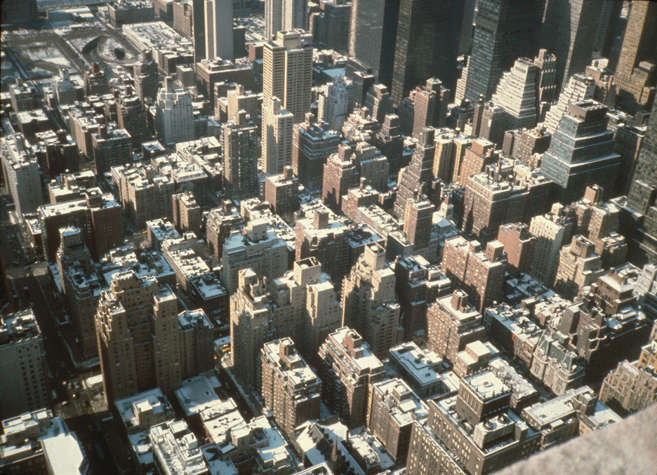Biographical Data
Born in Lvov, Poland (present day Ukraine), in 1927. In 1946 Piotr Kowalski travels to Europe and later studies architecture, mathematics, and philosophy at MIT in Cambridge (1947-1952). In the 50’s, already settled in France, he works as an architect with Breuer, Pei and Prouvé. In 1958 he creates his experimental architecture and sculpture Society and decides to consecrate himself to art. His first individual exhibition takes place in 1961. He becomes one of the leading figures of Kinetic art and a pioneer of technologic art. He wants “to put science within reach of everyone through art” and he has a “critical view of science and present day knowledge”. In 1968 he represents France at the Venice Biennale. Three years later he is granted French citizenship. In 1981 he is awarded the Grand Prix National de Sculpture. He teaches at MIT in Cambridge (1978-1985) and at the École nationale supérieure des Beaux-arts de París (1987-1992). Piotr Kowalski dies in Paris in 2004.
Brief Chronology
In the beginning, Piotr Kowalski creates architectural sculptures in polyester, sculptures made up of different shapes that would be put into motion by mechanical devices (Machine pseudodidactique, 1961-1963), later he will work on lumino-kinetic towers (1968). In 1970 he uses sound to explore time, he design pyramids built with neon and steel tubes, floating spheres made up of dynamite, and wax, bronze and glass pieces (Shrunkenpieces, 1970-1979). In the 80’s he organizes artistic events through simultaneous satellite connections (Time-Machines). In 1990-1991 he imagines the Flèche du temps, an interactive video-numeric installation. With Passionnément, he represents sound in three dimensions: on a relief formed by 99 glass sheets he translates the sound of words into waves. In 1992 he exhibits at the Pompidou Center the Cube de la Population, (glass balls that show the population flow in real time), he works with holography (Lumière, 1992-1993), light and glass (Cône de verre, 1992). In the 80’s his monumental interventions are put in public spaces like l’Axe de la terre (Cité Descartes, Marne-la-Vallée, France), a huge steel needle pointing towards the North Star; la Place des Degrés (Porte Sud, La Défense, Paris, 1983- 1991), la Porte de Paris (Saint Quentin-en-Yvelines, France). He also creates “book objects”, most of the times with the poet Gherasim Luca (Sisyphe-géomètre, 1966; Le Chant de la Carpe, 1973).
P.L.T.
